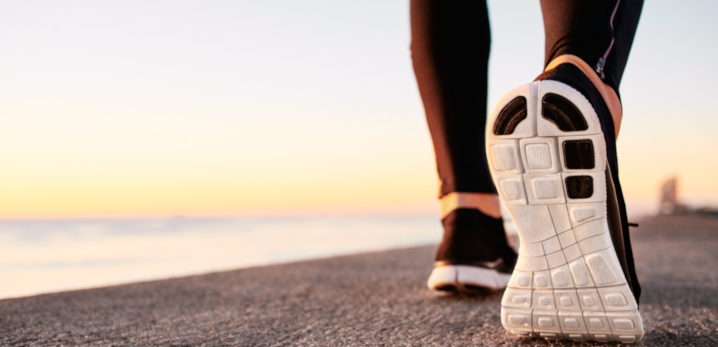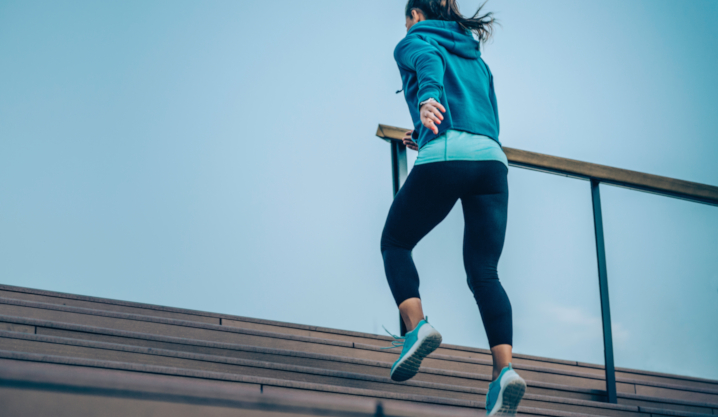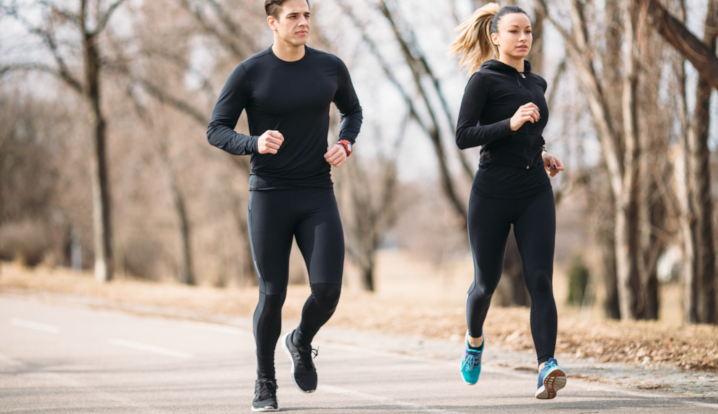Running shoes are an essential component of a runner’s gear, influencing performance, comfort, and injury prevention. With a myriad of options available in the market, understanding the anatomy of running shoes becomes crucial for both novice and seasoned runners alike.
This comprehensive guide aims to demystify the various elements that make up running shoes, from the outsole to the upper, and to provide insights into how each part contributes to overall function and fit.
By exploring the intricacies of running shoe design, this post will equip you with the knowledge needed to make informed choices, ensuring that your footwear supports your running journey effectively.
Table of Contents
- The Importance of Running Shoes
- Key Components of Running Shoes
- Types of Running Shoes
- Choosing the Right Running Shoe
- Common Running Shoe Technologies
- Maintenance and Care for Running Shoes

The Importance of Running Shoes
Running shoes are crucial for preventing injuries, providing support, and enhancing performance. They are designed to absorb impact, improve stability, and promote proper foot alignment during runs. Quality running shoes can reduce the risk of common injuries like shin splints, plantar fasciitis, and knee pain.
Additionally, they offer comfort and cushioning, allowing runners to log more miles efficiently. Choosing the right pair tailored to an individual’s foot type and running style is essential for maximizing benefits and ensuring a safe and enjoyable running experience.
RELATED: A Beginner’s Guide to Running Shoes
Key Components of Running Shoes
1. Upper
The upper is a crucial component of running shoes, providing support, comfort, and breathability. It is typically made from lightweight, flexible materials that conform to the foot’s shape, ensuring a snug fit. The design of the upper can include various features such as mesh panels for ventilation, overlays for added support, and a padded collar for comfort around the ankle.
A well-constructed upper enhances the overall fit of the shoe, reduces the risk of blisters, and allows for natural foot movement during runs. Proper care and maintenance of the upper can prolong the shoe’s lifespan, contributing to better performance and injury prevention.
2. Midsole
The midsole, as one of the key components of a running shoe, is positioned between the outsole and the upper. It primarily provides cushioning and support, absorbing impact during heel strike and providing propulsion during toe-off. The materials used in the midsole, such as EVA foam or polyurethane, influence the shoe’s comfort, weight, and responsiveness.
Additionally, the design of the midsole, including features like stability elements or energy return technology, can enhance the runner’s performance and reduce the risk of injury. Proper midsole selection is essential for optimizing fit and functionality tailored to individual running styles and terrain.
3. Outsole
The outsole is responsible for providing traction, durability, and stability. It is the bottom part of the shoe that directly contacts the ground. Made from rubber or other materials, the outsole features tread patterns designed to enhance grip on various surfaces.
A well-designed outsole helps absorb impact, reducing stress on the feet and promoting smoother transitions during running. The durability of the outsole is essential for longevity, as it withstands wear and tear from repeated use. Selecting a running shoe with an appropriate outsole is vital for optimal performance and injury prevention.
4. Insole
The insole, which is usually a removable part of the shoe, is one component that provides comfort, support, and stability. It sits inside the shoe, directly underfoot, and plays a vital role in shock absorption, helping to reduce the impact on joints during running. Insoles can vary in thickness, material, and design, allowing for personalized fit and support according to different foot types and running styles.
High-quality insoles can enhance overall performance by improving alignment and reducing the risk of injury, making them essential for both casual and competitive runners. Proper insole selection can lead to a more comfortable and efficient running experience.
5. Heel Counter
The heel counter helps provide stability and support to the heel and ankle. It is typically made of a firm material that helps to secure the foot in place, preventing excessive movement during running. A well-designed heel counter can enhance comfort, reduce the risk of injuries, and improve overall performance by ensuring proper alignment and fit. When selecting a running shoe, consider the heel counter’s height, stiffness, and overall design to match your foot type and running style.
6. Toe Box
The toe box, as a crucial component of a running shoe, is designed to accommodate the natural shape and movement of the toes during the running gait. It provides adequate space to prevent discomfort, blisters, and toe injuries, ensuring a comfortable fit.
A well-structured toe box allows for proper toe splay and enhances overall stability. Runners should look for a toe box that offers a balance between snugness and roominess, promoting natural foot function while maintaining support. Choosing the right toe box can significantly impact running performance and comfort.

Types of Running Shoes
1. Road Running Shoes
Road running shoes are specifically designed for running on paved surfaces, such as roads and sidewalks. They are lightweight, provide cushioning for comfort, and offer flexibility to support a natural running motion. These shoes typically feature a durable rubber outsole for traction and a breathable upper to enhance ventilation. Road running shoes are ideal for road races, training runs, and casual jogging on hard surfaces.
2. Trail Running Shoes
Trail running shoes are specialized footwear designed for off-road running on rugged terrains such as trails, mountains, and uneven surfaces. They typically feature a more aggressive outsole for better traction, added cushioning for comfort over long distances, and a durable upper to withstand the elements. Many trail running shoes also offer enhanced stability and support to protect the feet and ankles from injuries while navigating challenging landscapes.
3. Cross-Training Shoes
Cross-training shoes are versatile athletic footwear designed for various types of workouts, including weightlifting, aerobics, running, and sports activities. They provide support and stability for lateral movements while offering cushioning for high-impact exercises. Typically featuring a flexible and durable sole, cross-training shoes allow for multi-directional movement and are suitable for both gym workouts and outdoor activities.

Choosing the Right Running Shoe
1. Foot Type and Gait Analysis
- Neutral Foot: The arch is neither too high nor too low. The foot has a balanced structure, allowing for efficient movement and weight distribution. Ideal for various activities.
- Flat Foot (Overpronation): The arch is low or absent, causing excessive inward rolling of the foot during walking or running. This can lead to increased strain on the legs and feet.
- High-Arched Foot (Supination): The arch is elevated, resulting in reduced shock absorption and a tendency to roll outward. This foot type may lead to stress on the outer parts of the foot and ankle.
- Cavus Foot: A more severe form of high arch, often causing instability and increased pressure on the ball and heel of the foot. Individuals may experience pain and difficulty finding suitable footwear.
- Flexible Flatfoot: Appears flat when standing but has a normal arch when sitting. This foot type can experience discomfort due to the instability in the arch when weight-bearing.
- Rigid Flatfoot: A permanent flat foot with no arch present in any position. This type often leads to pain and requires medical evaluation for proper management.
- Pronation and Supination: Refers to the natural inward and outward rolling of the foot, respectively, which is essential for proper gait mechanics. An imbalance can lead to injuries.
Understanding these foot types is crucial for tailoring proper footwear, orthotics, and training methods to enhance performance and prevent injury.
2. Shoe Fit and Sizing
Finding the right shoe fit and sizing in running shoes is crucial for comfort and performance. Here are some key points to consider:
- Measure Your Feet: Always measure both feet, as they can be different sizes. Use a Brannock device or a similar foot measuring tool.
- Consider Width: Running shoes come in various widths (narrow, regular, wide). Choose a width that accommodates your foot without pinching or causing discomfort.
- Leave Room for Toes: Ensure there is approximately a thumb’s width of space between your longest toe and the front of the shoe. This allows for proper toe movement and prevents blisters.
- Check for Heel Fit: The heel should fit snugly without slipping. A secure heel reduces the risk of blisters and provides better stability.
- Try Shoes in the Evening: Feet tend to swell throughout the day, so trying on shoes in the evening can help you find a better fit.
- Wear Your Running Socks: Always try on shoes with the socks you plan to wear while running to get an accurate fit.
- Test the Shoes: Walk or jog in the store to assess comfort and fit. Ensure there are no pressure points or areas of discomfort.
- Break-in Period: While some shoes are ready to go straight out of the box, others may require a short break-in period. Gradually increase your mileage to adapt to the new shoes.
- Consult Size Guides: Refer to the manufacturer’s size guide, as sizing can vary between brands.
- Get Professional Advice: If unsure, visit a specialty running store where staff can help analyze your gait and recommend suitable options.
3. Cushioning and Support
Cushioning and support are critical factors in selecting the right running shoes. Proper cushioning absorbs impact during runs, reducing stress on joints and minimizing the risk of injury. A supportive shoe promotes stability and proper foot alignment, enhancing overall comfort and performance.
Insufficient cushioning can lead to fatigue and discomfort, while inadequate support may cause overpronation or supination, increasing injury risk. Choosing shoes with the appropriate level of cushioning and support based on your running style, foot type, and terrain can significantly improve your running experience and longevity.

Common Running Shoe Technologies
1. Cushioning Technologies
Common cushioning technologies in running shoes include:
- EVA (Ethylene Vinyl Acetate): A lightweight foam providing good cushioning and flexibility, commonly used in midsoles.
- PU (Polyurethane): Offers durability and support, often found in performance running shoes.
- Gel: Used by brands like ASICS, gel inserts help absorb shock and enhance comfort during runs.
- Air Cushioning: Nike’s Air technology utilizes pressurized air units in the sole for responsive cushioning and reduced weight.
- Boost: Adidas’ Boost technology features thermoplastic polyurethane (TPU) pellets for energy return and comfort.
- Zoom Air: A Nike technology that incorporates pressurized air units for dynamic responsiveness.
- React Foam: A balance of cushioning and energy return, providing a soft yet responsive feel.
- CloudTec: Found in On Running shoes, it features hollow pods that compress for cushioning and expand for energy return.
- Fresh Foam: It’s New Balance’s technology designed to provide plush cushioning with a natural fit.
- Hoka’s Meta-Rocker: A design that enhances the natural gait cycle, combined with ample cushioning for a smooth ride.
2. Stability Features
Common stability features of running shoes include:
- Medial Post: A firmer material on the inner side of the shoe to prevent overpronation.
- Heel Counter: A rigid structure that supports the heel and maintains stability during runs.
- Arch Support: Built-in support to align the foot and provide stability for runners with flat or high arches.
- Dual Density Foam: A combination of soft and firm foam materials to enhance cushioning and support.
- Torsion System: A design that allows for flexibility in the forefoot while stabilizing the midfoot.
- Wide Base: A broader sole to improve balance and prevent rolling of the ankle during runs.
- Outriggers: Extensions of the shoe’s outsole that provide additional lateral support and stability.
3. Breathability Enhancements
Common breathability enhancements in running shoes include:
- Mesh Uppers: Lightweight mesh materials allow for better airflow, keeping feet cool and dry.
- Ventilation Ports: Strategically placed holes or vents in the shoe provide additional airflow.
- Moisture-Wicking Linings: Fabrics that draw moisture away from the foot help to keep it dry and reduce sweat buildup.
- Perforated Designs: Shoes with perforated areas enhance breathability without compromising structure.
- Engineered Knits: Advanced knitting techniques create breathable zones within the shoe while offering support.
- Lightweight Materials: Using lighter materials reduces heat retention and increases comfort during runs.
- Cool Technology: Some brands incorporate cooling gels or fabrics that regulate temperature.
Consider these features when selecting running shoes for optimal comfort and performance.

Maintenance and Care for Running Shoes
1. Cleaning Techniques
Effective shoe cleaning techniques include:
- Remove Laces and Insoles: Take out the laces and insoles to clean them separately.
- Brush Off Dirt: Use a soft brush or cloth to remove loose dirt and debris from the surface.
- Prepare Cleaning Solution: Mix mild detergent or soap with warm water in a bowl.
- Clean the Upper: Dip a soft cloth or sponge into the solution and gently scrub the upper part of the shoe. Avoid soaking the fabric.
- Clean the Soles: Use the brush to scrub the outsoles with the cleaning solution, focusing on grooves and treads.
- Rinse: Wipe the shoes with a clean, damp cloth to remove any soap residue. Avoid submerging them in water.
- Dry Properly: Stuff the shoes with paper towels to maintain their shape and let them air dry in a well-ventilated area, away from direct sunlight or heat sources.
- Reassemble: Once dry, replace the insoles and shoelaces.
- Regular Maintenance: Clean your running shoes regularly to prevent buildup and extend their lifespan.
2. Drying and Storage Tips
Effective drying and storage tips include:
- Remove Insoles and Laces: Take out the insoles and laces to allow for better airflow and faster drying.
- Air Dry: Place shoes in a well-ventilated area away from direct sunlight to prevent material damage.
- Stuff with Newspaper: Fill shoes with crumpled newspaper to absorb moisture and help maintain shape. Change the newspaper as it becomes damp.
- Use a Fan: Position a fan nearby to increase airflow around the shoes, accelerating the drying process.
- Avoid Heat Sources: Keep shoes away from heaters, radiators, or hair dryers to prevent melting or warping.
- Regular Cleaning: Clean shoes regularly to remove dirt and grime, which can trap moisture.
- Store in a Cool, Dry Place: Store shoes in a breathable container or bag in a cool, dry location to prevent mold and odors.
- Rotate Shoes: Alternate between pairs to allow each pair adequate time to dry and rest between runs.
3. Signs of Wear and When to Replace
Here’s how you should look for signs of wear so you’ll know when to replace your running shoes:
- Outsole Worn Down: Check the tread on the outsole. If it’s significantly worn down or smooth in certain areas, it’s time for a replacement.
- Loss of Cushioning: Press on the midsole. If it feels flat or you notice less bounce, the cushioning has likely degraded.
- Uneven Wear: Inspect for uneven wear patterns on the outsole. This indicates that your shoes are no longer providing adequate support.
- Physical Damage: Look for visible signs of damage such as tears, cracks, or separation of the sole from the upper.
- Chafing or Blisters: If you start experiencing new chafing or blisters during runs, your shoes may not be fitting properly due to wear.
- Mileage: As a general guideline, replace running shoes after 300-500 miles, depending on running style and shoe type.
- Personal Comfort: If you notice discomfort or pain during or after your runs, it may be time to invest in a new pair.
Regularly monitor these signs to ensure optimal performance and avoid injury.
Conclusion
In conclusion, a thorough understanding of the anatomy of running shoes is essential for both novice and experienced runners alike. Recognizing the various components and their functions empowers runners to make informed decisions when selecting footwear that best suits their individual needs.
By prioritizing proper fit, support, and cushioning, athletes can enhance their performance, prevent injuries, and enjoy a more comfortable running experience. Investing time in understanding the intricacies of running shoes not only contributes to overall health and well-being but also fosters a deeper appreciation for the sport itself. As runners continue to pursue their goals, let this knowledge serve as a foundation for achieving optimal results on every run.
You may also like:
